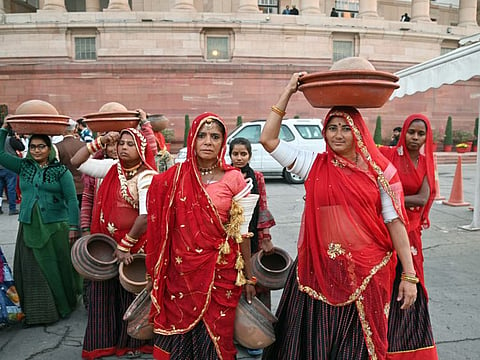International Year of Millets 2023 kicks off in India
UN declared 2023 as the International Year of Millets in March 2021

New Delhi: The International Year of Millets 2023 has officially kicked off.
The government of India under Prime Minister Narendra Modi spearheaded the United Nations General Assembly (UNGA) resolution for declaring the year 2023 as the International Year of Millets and the proposal of India was supported by 72 countries.
UNGA declared 2023 as the International Year of Millets in March 2021.
January 2023 is the focused month for the Ministry of Sports and Youth Affairs, and the States of Chhattisgarh, Mizoram, and Rajasthan for conducting events and activities related to the millets year.
India pushed for recognizing the importance of millet and creating a domestic and global demand along with providing nutritious food to the community.
What are millets?
Millet is a common term for categorizing small-seeded grasses that are often called Nutri-cereals. Some of them are sorghum (jowar), pearl millet (bajra), finger millet (ragi), little millet (kutki), foxtail millet (kakun), proso millet (cheena), barnyard millet (sawa), and kodo millet (kodon).
An essential staple cereal crop for millions of smallholder dryland farmers across Sub-Saharan Africa and Asia, millets offer nutrition, resilience, income and livelihood for farmers, and have multiple uses such as food, feed, fodder, biofuels and brewing.
Significance and benefits of millets:
Millets are nutritionally superior to wheat and rice owing to their higher protein levels and a more balanced amino acid profile. Millets also contain various phytochemicals which exert therapeutic properties owing to their anti-inflammatory and anti-oxidative properties.
Further, besides being climate resilient, millet grains are rich sources of nutrients like carbohydrates, protein, dietary fibre, and good-quality fat; minerals like calcium, potassium, magnesium, iron, manganese, zinc and B complex vitamins.
Most importantly, millet production is not dependent on the use of chemical fertilizers.
Background of millets in India:
Millets were traditionally consumed, but due to the push given to food security through Green Revolution in the 1960s, millets were less consumed and almost forgotten.
Before the Green Revolution, millets made up around 40 per cent of all cultivated grains, which has dropped to around 20 per cent over the years.
Not only has the consumption of millets declined, but the area under production has been replaced with commercial crops, oilseeds, pulses, and maize. These commercial crops are profitable, and their production is supported by several policies through subsidized inputs, incentivized procurement, and inclusion in the Public Distribution System. This has resulted in changes in dietary patterns with preferential consumption of fine-calorie-rich cereals.
India produces more than 170 lakh tonnes of millet, which is 80 percent of Asia's and 20 percent of global production.
India produces all the nine commonly known millets and is the largest producer and fifth-largest exporter of millets in the world. Most of the states in India grow one or more millet crop species. Rajasthan, Uttar Pradesh, Haryana, Gujarat, Madhya Pradesh, Maharashtra, Karnataka, Tamil Nadu, Andhra Pradesh, and Telangana are the major millets producing states.
India's millet trade:
India exported millets products worth of US dollar 34.32 million during 2021-22. In 2020- 21, India exported millets worth US dollar 26.97 million against US dollar 28.5 million in 2019-20.
India's major millet exporting countries are UAE, Nepal, Saudi Arabia, Libya, Oman, Egypt, Tunisia, Yemen, the UK, and the US.
The major millet-importing countries in the world are Indonesia, Belgium, Japan, Germany, Mexico, Italy, the US, the UK, Brazil, and the Netherlands.
A look at the trend:
The Minimum Support Price for jowar, bajra, and ragi increased 73 percent, 65 percent, and 88 percent to Rs 2,990, Rs 2,350, and Rs 3,578, respectively, data showed.
Sign up for the Daily Briefing
Get the latest news and updates straight to your inbox


